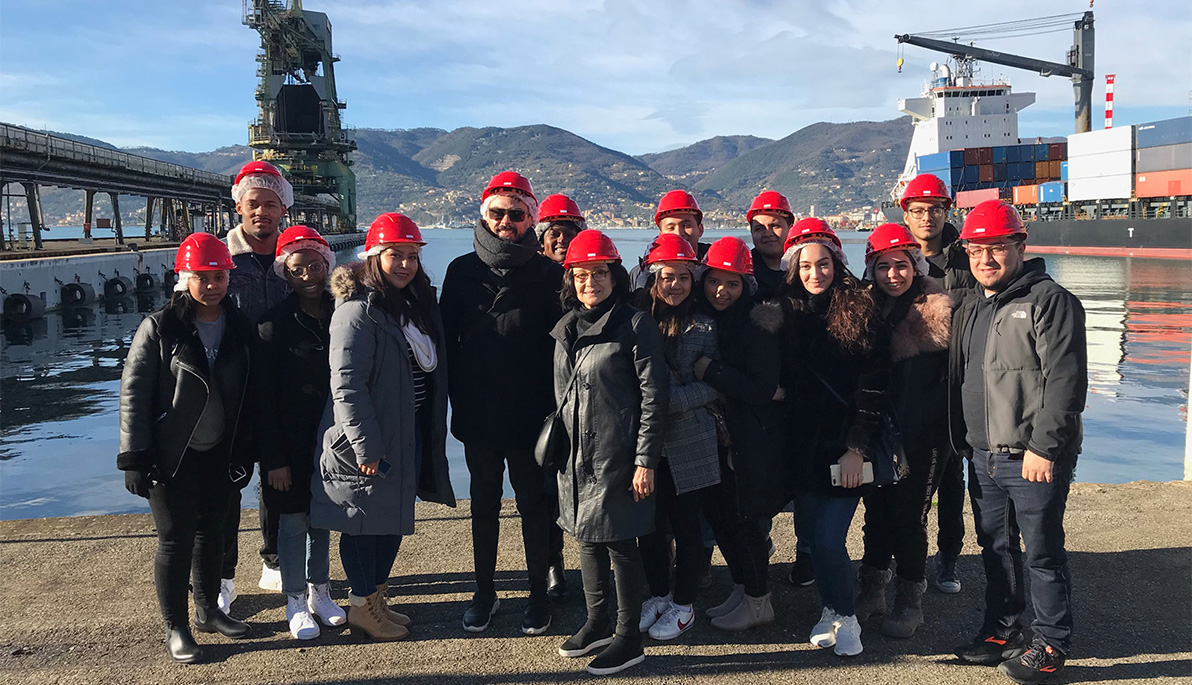News
Finding New Life for Abandoned Power Plants
February 25, 2019
Pictured: The students visited five abandoned power plants in Italy, including La Spezia.
Over the past few years, 23 power plants across Italy have gradually been abandoned for factories that use cleaner, more sustainable ways to produce energy. Enel, an Italian multinational manufacturer and distributor of electricity and gas, wants to revitalize the areas through a project called Futur-e. During the fall 2018 semester, Marco Fragale, head of the project, met with 15 students in NYIT School of Architecture and Design to talk about the company’s initiative.
In January, as part of their two-semester thesis project, the students visited five of those sites located throughout Italy: Bari, Montalto di Castro, La Spezia, Santa Barbara, and Porto Tolle. They evaluated the areas and analyzed the ecology, economy, and culture of these places and their potential uses. When they returned to New York, they began working on proposals for the redevelopment of the locations.
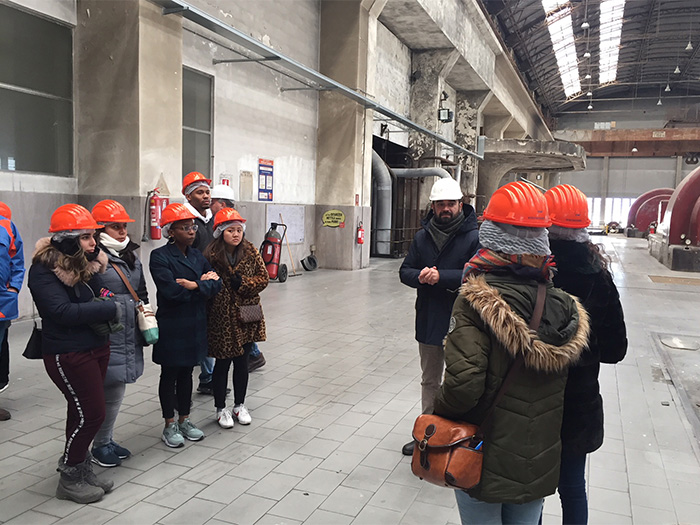
A representative from Enel takes the students on a tour of an abandoned power plant in Bari.
From Power Plant to Public Green Space
“One of the biggest challenges in redeveloping the abandoned power plants is that some of them are in the middle of nowhere,” said architecture student Belinda Silverne, whose thesis site location is Montalto di Castro, 50 miles northwest of Rome. “This means there must be a way to attract the people living in the community as well as tourists. Another challenge we face is figuring out strategies to remove all polluted materials. Some of us are planning to transform the sites into sustainable areas.”
That’s the approach Silverne is taking with her design proposal. Her location, Montalto di Castro, is located near the Tyrrhenian Sea and was once an Etruscan territory. “There is so much history there; part of my thesis is to preserve that historic aspect for the community,” she said. “I plan to protect and conserve the biodiversity of my site by reclaiming and removing all the polluted materials…I want to minimize soil disturbance as much as possible, therefore keeping structures that are already on the site is a must.” She also plans to use green roofs and ensure the buildings are net zero and working solely with renewable sources.
“These projects that are located in sensitive environmental settings give students the opportunity to understand and devise ways to achieve a balance between man-made and natural environments to heal the ecology of these regions,” said Professor Beyhan Karahan, M.A., who oversaw the trip along with Associate Professor Giovanni Santamaria.
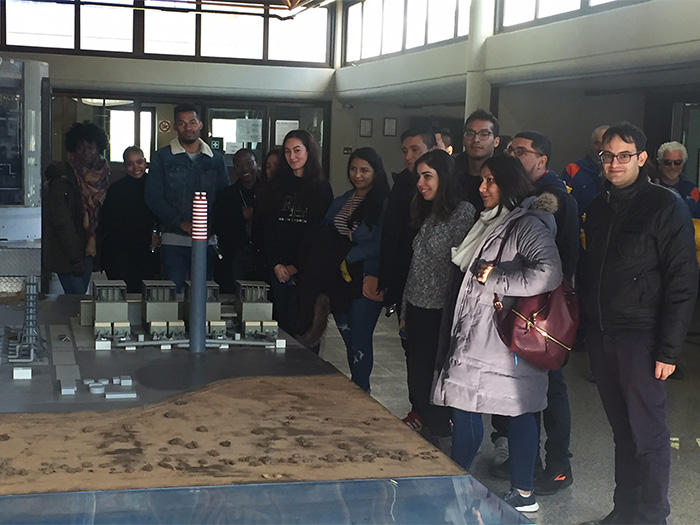
Students on a tour of the Montalto di Castro power plant.
Community Centered
The city of Bari lies on the banks of the Adriatic Sea in southern Italy. Tourists flock there every year, but the power plant is located in an industrial zone on the outskirts of the city. Student Christian Gonzalez, who is working on a proposal for the site, sees the project as a way to bring both tourists and locals to the abandoned power plant through the development of more green spaces. “[The abandoned area] has the potential to be part of the city with new parks as well as residential and commercial uses,” he explained.
“The challenging part is to thoughtfully consider the small towns and local people as well as to create a project that will preserve the history of the site and make the local community proud,” said student Saw Hla Nwe, who is working on the redevelopment of Porto Tolle in northern Italy, the largest of the abandoned plants. “I was excited and worried at the same time as it was going to be different, especially in scale, [but] visiting the site for the first time, I got a better understanding of what the small towns located near the power plant looked like and how they work with the landscape.”
Nwe is expanding on a proposed plan for an outdoor market where locals and tourists can shop as well as a small housing development. There will also be an education center where visitors can “experience the history and technology once used to run the power plant and understand the technique of how local agriculture and aquaculture work,” Nwe explained.
“I feel that we have an important mission to accomplish in order to repurpose the redevelopment of the sites,” said Silverne. “The people supported us and showed us that they really care about any change happening in their community.”
In fact, the students made such an impression on the communities that their visit was covered by local media. “Their interest underlines the quality of the education that our school offers to our students,” said Karahan.
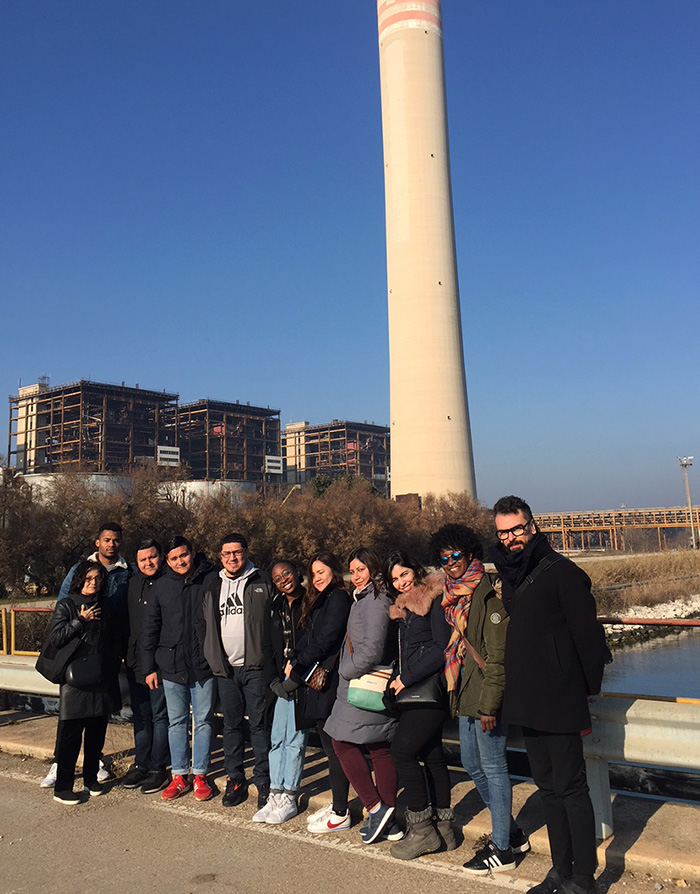
Professor Beyhan Karahan (far left) and Associate Professor Giovanni Santamaria (far right) with students in the School of Architecture and Design at the Porto Tolle power plant.
Real World Impact
It wasn’t just the communities that were impressed by the students. Enel was so taken with the group’s professionalism and innovative ideas that the company made a point of highlighting the project on its website. “The enthusiasm of the Enel personnel and their careful presentations gave us a clear direction in order to pursue our work,” said Santamaria. “This is a course in which students don’t just learn to design a project from scratch but also to rethink what has already been built from a holistic, circular economy perspective that melds the redevelopment of the spaces with the ecology of the area.”
More importantly, the project is leaving a lasting impression on the future architects. “I think I found my passion for sustainable design by working on this project,” said Silverne. “It led me to minor in energy science, technology, and policy. NYIT was one of the best decisions that I made when I decided to get my bachelor’s degree after getting my associate’s degree in architecture.”
In addition to the site visits, Karahan and Santamaria accompanied the students to major urban spaces and architectural landmarks in Milan, Rome, Florence, and La Spezia to examine examples of ancient, renaissance, baroque, and modern architecture in Italy.
In May, the students will present their final projects to Enel. “I am excited to show my final proposals,” said Nwe. “It is an honor for me to work with a major company like Enel and be a part of the Futur-e initiative.”
Added Gonzalez, “What really gets me excited is showing off our hard work and the possibility of our designs being built.”
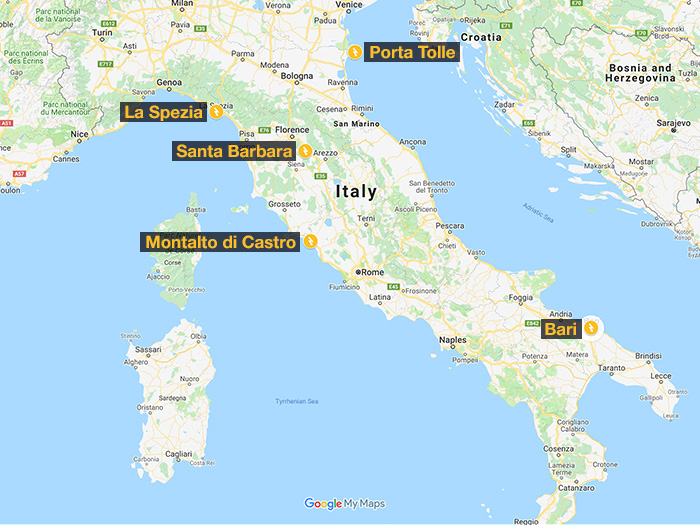
Fifteen School of Architecture and Design students are working on proposals to redevelop five abandoned power plants in Italy, including Bari, Montalto di Castro, La Spezia, Santa Barbara, and Porto Tolle.
